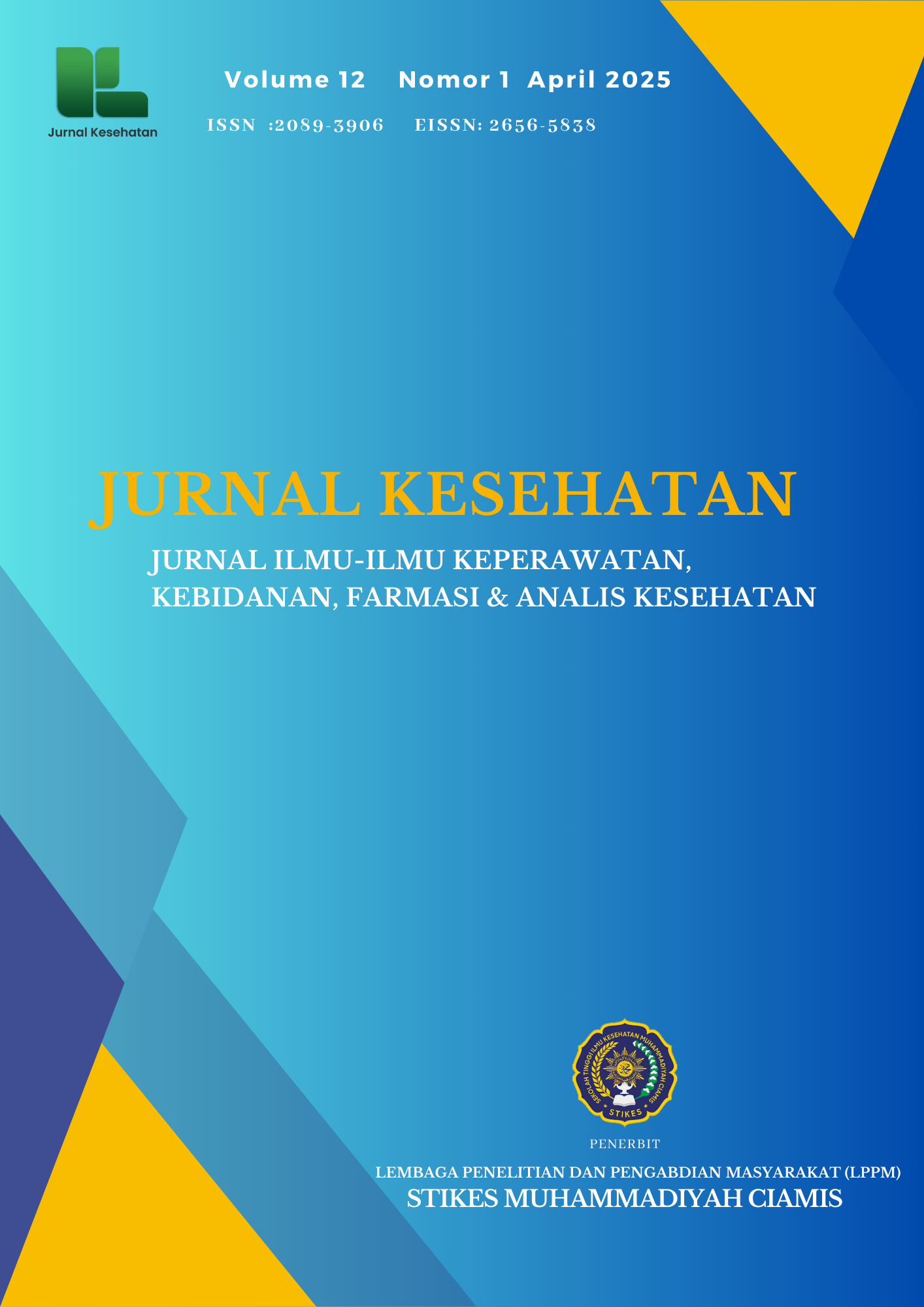Nonmaleficence in Paediatric Patients With Diarrhoea : A Concept Analysis
Main Article Content
Abstract
Diarrhoea is still a world health problem, from WHO data diarrhoea is the number one cause of death of toddlers Proper handling will minimise the occurrence of complications that will occur in children with diarrhoea, so the actions taken by nurses must be in accordance with existing procedures and not harm the patient.The purpose of concept analysis in this study was to obtain relevant definitions of non-maleficence in paediatric patients with diarrhoea.The concept analysis method in this study uses Walkers and Avants 2014. Databases that have been obtained from various sources including PUBMED, Google Scholar, by writing the keywords ‘Diarrhoea in Children’, ‘Nonmaleficence’, with the year of publication 2010 to 2024 in English or Indonesian. The principle of non-maleficence requires that every action does not harm or harm either physically or psychologically, and applies that the action taken must outweigh the harm received by the patient and not offend. The concept of non-maleficence used by nurses explaining to the patient's parents with simpler language
Article Details

This work is licensed under a Creative Commons Attribution-ShareAlike 4.0 International License.
References
Abdulla, O. N. M., Badulla, W. F. S., Alshakka, M., Al-Abd, N., & Ibrahim, M. I. M. (2021). Mothers Knowledge, Attitude and Practice Regarding Diarrhea and its Management in Aden-Yemen: A Cross-Sectional Study in Poor Resource Setting. Journal of Pharmaceutical Research International, January, 365–378. https://doi.org/10.9734/jpri/2021/v33i45b32817
Bleil, M. E., Roisman, G. I., Hamilton, D. T., Magro, S. W., Appelhans, B. M., Gregorich, S. E., Booth-LaForce, C., & Pianta, R. C. (2024). Which aspects of education are health protective? a life course examination of early education and adulthood cardiometabolic health in the 30-year study of early child care and Youth Development (SECCYD). In BMC public health (Vol. 24, Issue 1, p. 1092). https://doi.org/10.1186/s12889-024-18560-4
Della Croce, Y. (2023). Epistemic Injustice and Nonmaleficence. Journal of Bioethical Inquiry, 20(3), 447–456. https://doi.org/10.1007/s11673-023-10273-4
Feriadi, A., Purwanti, E., & Novyriana, E. (2020). Gambaran Tingkat Penerapan Prinsip Etik Keperawatan Di Ruang Rawat Inap Kelas Iii Rumah Sakit Pku Muhammadiyah Gombong. Jurnal Ilmiah Kesehatan Keperawatan, 16(1), 19–27. http://ejournal.stikesmuhgombong.ac.id
Guo, Q., Goldenberg, J. Z., Humphrey, C., El Dib, R., & Johnston, B. C. (2019). Probiotics for the prevention of pediatric antibiotic-associated diarrhea. Cochrane Database of Systematic Reviews. https://doi.org/10.1002/14651858.cd004827.pub5
Ianiro, G., Rizzatti, G., Plomer, M., Lopetuso, L., Scaldaferri, F., Franceschi, F., Cammarota, G., & Gasbarrini, A. (2018). Bacillus clausii for the treatment of acute diarrhea in children: A systematic review and meta-analysis of randomized controlled trials. Nutrients, 10(8). https://doi.org/10.3390/nu10081074
Kemenkes RI. (2023). Rencana Aksi Nasional Penanggulangan Pneumonia dan Diare 2023-2030. In Direktorat Jenderal Pencegahan dan Pengendalian Penyakit. https://p2p.kemkes.go.id/wp-content/uploads/2023/12/NAPPD_2023-2030-compressed.pdf
Li, Z., Zhu, G., Li, C., Lai, H., Liu, X., & Zhang, L. (2021). Which probiotic is the most effective for treating acute diarrhea in children? A bayesian network meta-analysis of randomized controlled trials. Nutrients, 13(12), 1–16. https://doi.org/10.3390/nu13124319
Motloba, P. (2019). Non-maleficence - a disremembered moral obligation. South African Dental Journal, 74(1). https://doi.org/10.17159/2519-0105/2019/v74no1a7
Nurhidayat, N., Firdaus, F. A., Nurapandi, A., & Kusumawaty, J. (2022). Analisis faktor-faktor yang mempengaruhi terjadinya skabies pada santri di Pondok Pesantren Miftahul Amin. Healthcare Nursing Journal, 4(2), 265-272.
Purwanto, K. J., Juffrie, M., & Ismail, D. (2010). Urine specific gravity as a diagnostic tool for dehydration in children. Paediatrica Indonesiana, 50(5), 269. https://doi.org/10.14238/pi50.5.2010.269-73
Ruhimat, U., Mutmainah, R. N., Ramdan, S. R. K., & Firdaus, N. R. (2024). Utilization of Purple Sweet Potato Juice As an Alternative Violet Crystal in Coloring Streptococcus sp Bacteria and Escherichia coli. JURNAL KESEHATAN STIKes MUHAMMADIYAH CIAMIS, 11(2), 149-156.
Thiessen, C., Gordon, E. J., Reese, P. P., & Kulkarni, S. (2015). Development of a Donor-Centered Approach to Risk Assessment: Rebalancing Nonmaleficence and Autonomy. American Journal of Transplantation, 15(9), 2314–2323. https://doi.org/10.1111/ajt.13272
Walker, L. O., & Avant, K. C. (2014). Strategies for theory construction in nursing (5th ed.). Pearson Custom Library. www.pearsoned.co.ukWeltermann
World Health Organization (WHO). (2024). Diarrhoeal disease. https://www.who.int/news-room/fact-sheets/detail/diarrhoeal-disease

